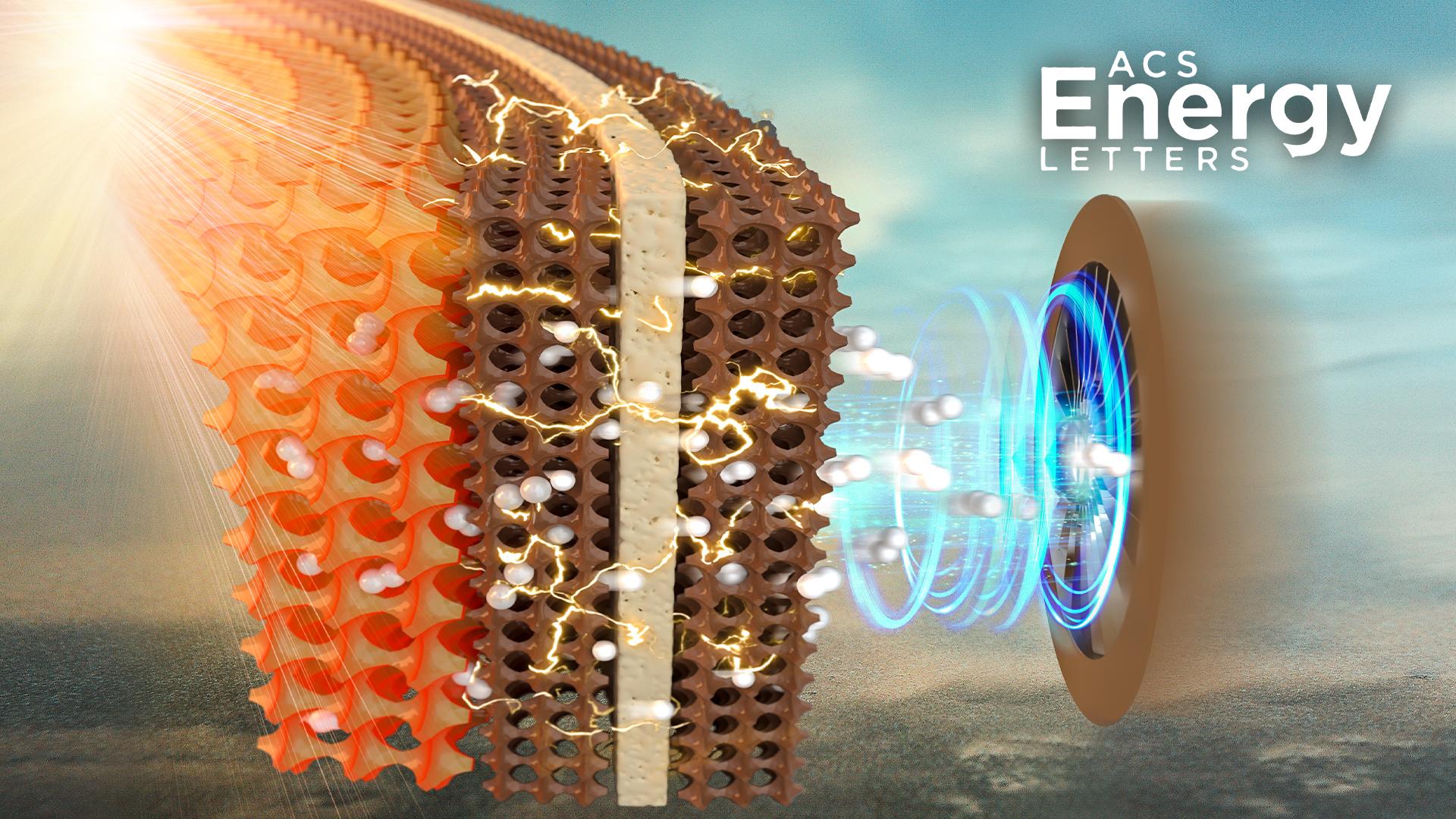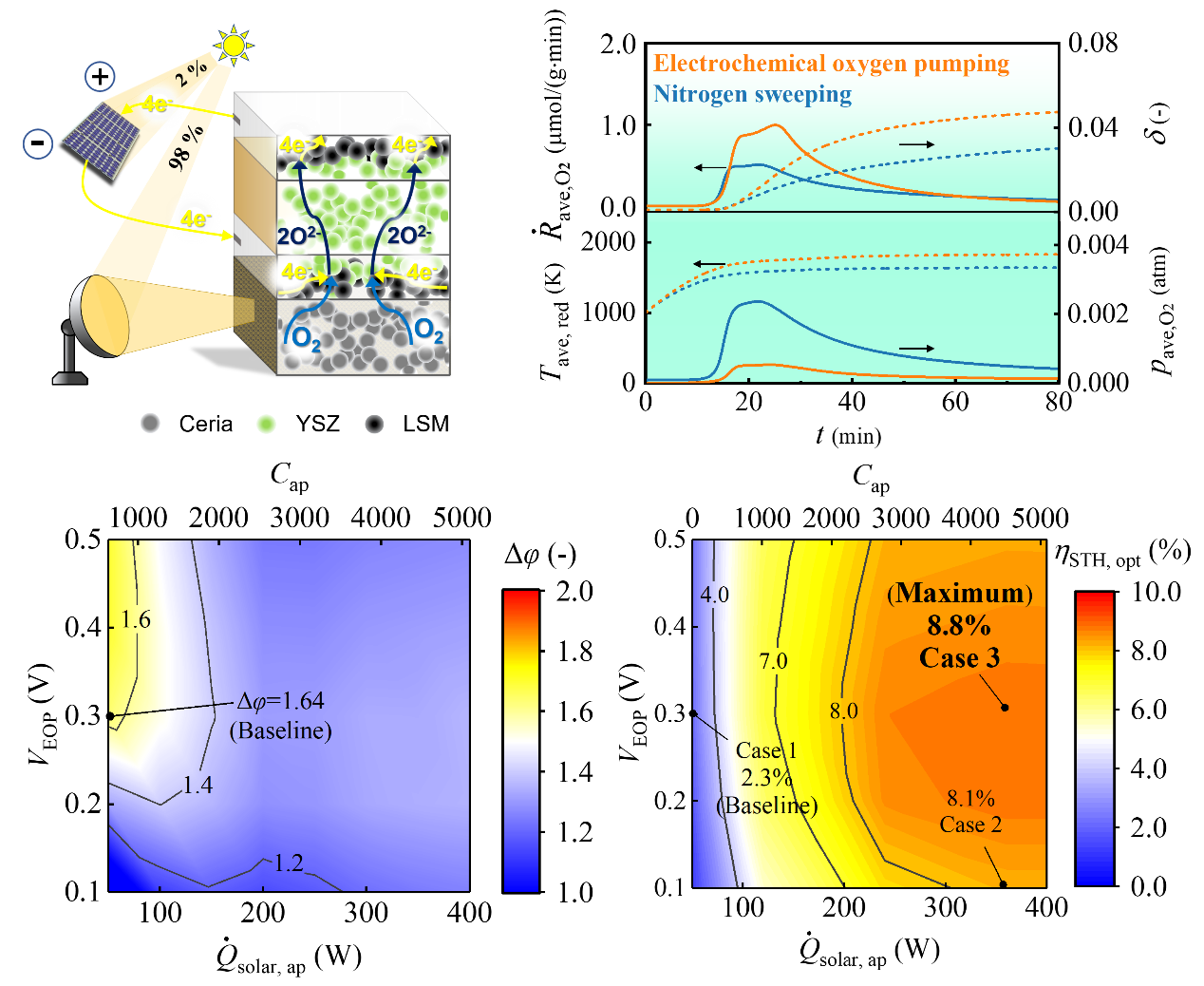Solar-driven thermochemical redox cycles for H2O/CO2 splitting are promising processes for sustainable fuel production, directly storing solar energy into energy-dense chemicals such as H2 or CO. The solar-to-fuel efficiency of a thermochemical reactor is highly dependent on the temperature and O2 removal during the reduction step. Conventional techniques, such as nitrogen sweeping and vacuum pumping, require a high heating load and/or additional gas separation work, which limits the reactor efficiency.

Professor Meng Lin’s group from the Department of Mechanical and Energy Engineering at the Southern University of Science and Technology (SUSTech) has recently reported a novel enhancement technique for thermochemical fuel production. Inspired by the oxygen separation method in oxygen generation and sensing, the researchers integrated a high-temperature electrochemical oxygen pump (EOP) into the thermochemical cycle reactor to create a low oxygen partial pressure in the reduction step.
Their research results, entitled “Enhanced Solar-to-Fuel Efficiency of Ceria-Based Thermochemical Cycles via Integrated Electrochemical Oxygen Pumping,” have been published in ACS Energy Letters, a high-impact academic journal.

Figure 1. Schematic of the proposed electrochemical oxygen pump assisted thermochemical reduction and key results of the case studies.
The proposed core EOP, a compact symmetrical solid oxide electrochemical cell (LSM/YSZ/LSM), was designed adjacent to the reticulated porous ceramic ceria active layer to control the in-situ reaction environment. The proposed EOP pathway can substantially reduce oxygen partial pressure by simply regulating operational voltage control with little thermal loss and extra energy requirements. It shows a 1.64 times enhancement in solar-to-fuel efficiency than the traditional technology. The efficiency can be further improved to 10% through parameter optimization, such as voltage control, increasing the ceria layer thickness, and improving the oxygen diffusivity. Meanwhile, the EOP technique achieved a more uniform temperature distribution in the reactor functional layer, resulting in better thermo-mechanical stability.
This work provides a new pathway for pushing the solar thermochemical fuel production route toward higher efficiency. Design guidelines, as well as operation strategies, were offered based on theoretical insights.
Research Assistant Wandong Bai and master’s student Haodong Huang are the co-first authors of this paper. Prof. Meng Lin is the corresponding author. SUSTech is the first communication unit, and the Swiss Federal Institute of Technology in Lausanne is the cooperative unit.
This research was supported by the National Natural Science Foundation of China (NSFC), the Institute of Carbon Neutral Energy of SUSTech, and the Center for Computational Science and Engineering of SUSTech.
Paper link: https://pubs.acs.org/doi/10.1021/acsenergylett.2c01318
To read all stories about SUSTech science, subscribe to the monthly SUSTech Newsletter.
Proofread ByAdrian Cremin, Yingying XIA
Photo By